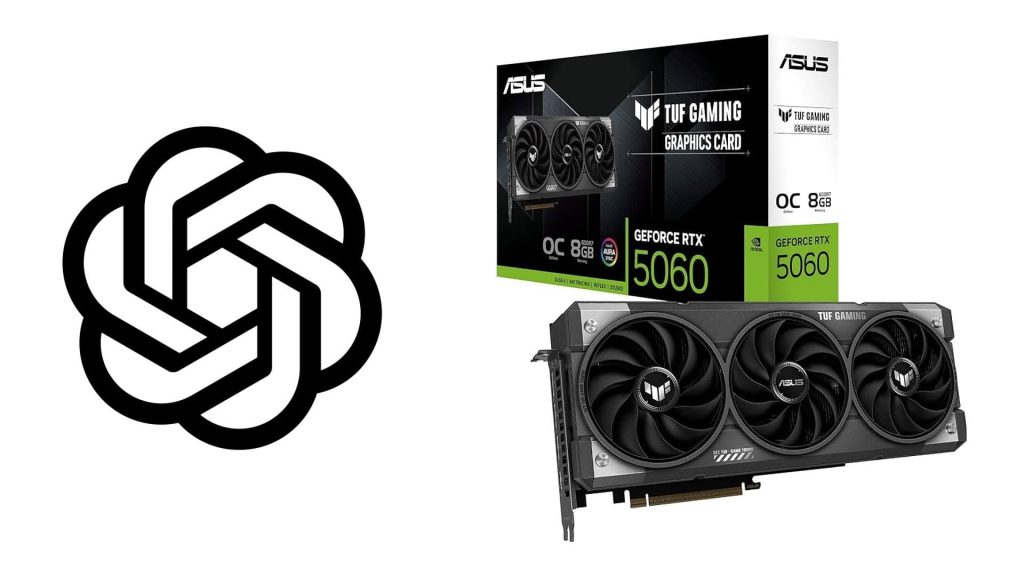A gaming GPU is more than capable of running several ChatGPT-like LLMs flawlessly for everyday productivity. Running these models locally can give you added security and peace of mind, along with no usage limits. The open-source market has caught up quickly in recent years, with the latest releases on par or even better than some proprietary LLMs. Tools such as Ollama and LM Studio have democratized language model usage to the point where not a single line of code is required.
Let’s look at some of the best open-source models you need to download today on systems with gaming GPUs.
Multiple open-source LLMs run flawlessly on gaming GPUs
1) Qwen 2.5 Coder 7B/14B


The Qwen series is arguably one of the best when it comes to mathematical and reasoning tasks. Qwen 2.5 Coder is designed to specialize in coding, which adds to its appeal for budding developers and day-to-day help.
The model is available in 7B and 14B sizes, allowing it to fit on any gaming GPU with more than 10 GB of video memory. You can also get GGUF, 4-bit, and 8-bit quantized versions to cut VRAM usage even further.
The model supports tool usage, has a maximum context size of 128K tokens to handle large codebases, and supports 40+ programming languages out of the box. However, unlike the rest of the Qwen 2.5 family, the Coder is unimodal (it can’t take image inputs).
Pros:
Excellent code generation across 40+ programming languages.Large 128K context window handles big codebases easily.Multiple quantization options for different VRAM budgets.
Cons:
Text-only model, no image/vision capabilities.7B version may struggle with very complex coding tasks.Requires specific prompting for best coding results.
Read more: 7 best uses of ChatGPT
2) Gemma 3 12B (QAT)


Gemma3 is one of the most powerful open-source models today. At launch, Google claimed Gemini 1.5 Pro-level performance on these open-source multimodal alternatives, and it holds up those promises pretty well. Gemma3 12B is the most well-rounded option from this family, as it mixes decent capabilities across a diverse range of tasks with a manageable video memory footprint.
The model, however, is limited to a context window of 8K tokens, which makes it ideal for conversational tasks only. With an 8-10 GB gaming GPU, you can run the Quantization Aware Training (QAT) version of the model flawlessly with decent inference speeds. Moreover, the model also supports extreme compression through 4 and 6-bit GGUF variants.
Pros:
Very efficient memory usage on gaming GPUs with high-quality quantization.Strong general-purpose performance across many tasks.Native support in popular tools like Ollama and LM Studio.
Cons:
Smaller 8K context window limits long conversations.Not specialized for coding compared to dedicated code models.Newer model with less community fine-tuning available.
3) DeepSeek R1 8B/14B


DeepSeek R1 took the internet by storm when it launched earlier this year. The model is designed for complex reasoning tasks such as coding and maths, making it an ideal productivity companion. However, on some gaming GPUs, you won’t be able to run the full 671B model. Instead, the Distill variants built in Llama 3.1 8B and Qwen 2.5 work on cards with limited VRAM.
The Distil variants still retain impressive capabilities across a diverse range of thinking tasks. However, performance in everyday prompts might suffer. We recommend having this model alongside Gemma3 12B or Llama 3.2 Vision for a well-rounded set of AI companions.
Pros:
Shows a detailed reasoning process for complex problems.Excellent performance on math and logic tasks.Good balance of size and reasoning capabilities.
Cons:
Reasoning chains can be very long and slow to generate.May overthink simple questions unnecessarily.Less optimized for pure code generation tasks.
Read more: DeepSeek Janus Pro: Everything to know about the new AI model
4) Phi-4 Mini Reasoning


Microsoft Phi 4 is among the frontier models in mid-2025. The company has also forayed into reasoning variants, with 4B and 14B entries. The smaller of them can be a decent option for light tasks such as high-school maths and simple calculations. Given its 3.8B size, the model fits flawlessly on gaming GPUs with as little as 6 GB of video memory.
The model also supports a 128K context window, meaning you can use it in RAG applications. Also, you get several quantization levels, up to 4-bit GGUF, making it ideal for CPU-only inference as well. However, performance won’t be at par with larger reasoning LLMs such as QwQ 32B or DeepSeek R1 8B/14B.
Pros:
Very efficient for its capabilities, runs on modest hardware.Good coding performance despite smaller size.Fast inference speed on consumer GPUs.
Cons:
Complex reasoning capabilities are not on par with larger models.Limited availability of quantized versions currently.
5) Llama 3.3 70B


If you’re looking for full ChatGPT-like capabilities, there are very few models as well-rounded as Llama 3.3 70B. The model bundles commendable world knowledge, tool usage, and prose capabilities to be a serious day-to-day companion. However, even with extreme quantization, which of course takes a toll on the performance, you’ll need a gaming GPU with a ton of VRAM.
The model requires at least 16 GB of VRAM to fit with 4-bit quantization. You’d want to have 20+ GB video memory with 64 GB system RAM to avoid out-of-memory issues. That said, inference speeds can be quite low even on high-end cards such as the RX 7900 XT and the RTX 5080. A 5090 does justice to the 70B LLM.
Pros:
Near state-of-the-art performance when properly quantized.Large 128K context window for extensive conversations.Strong performance across all task types.
Cons:
Requires a high-end gaming GPU with 16GB+ VRAM even when quantized.Slower inference speed compared to smaller models.High power consumption and heat generation.
Gaming GPUs have become incrementally capable in the past few years to the point where Nvidia advertised its Blackwell cards as ‘AI-first.’ With a capable 16 GB GPU, you can get a lot of tasks done, including RAG apps, MCP workflows, and more. The models listed above are all contemporary releases that support these latest technologies.
Edited by Ripunjay Gaba

